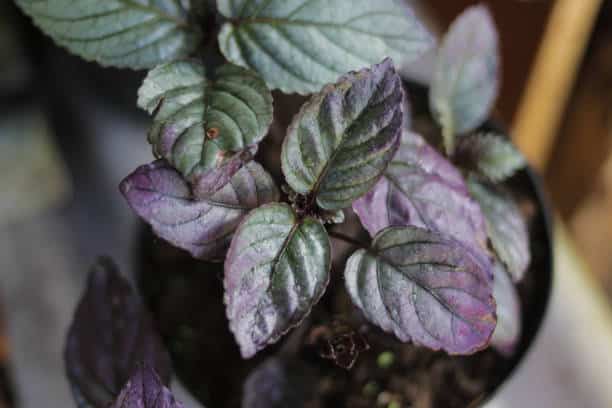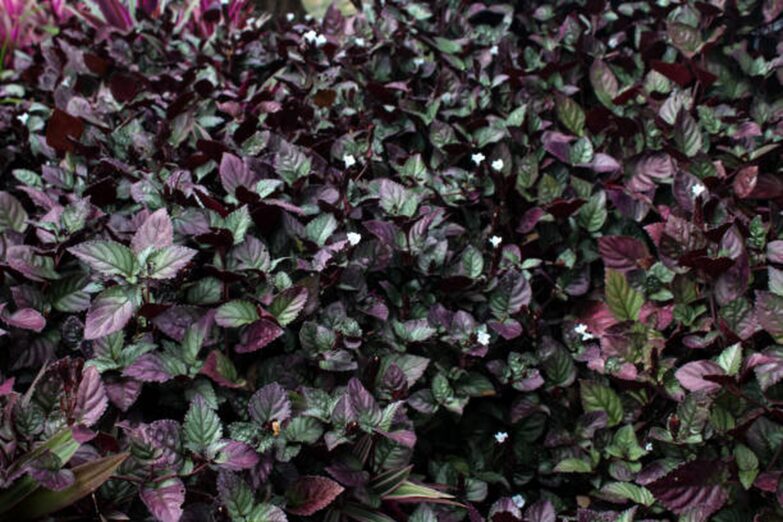One of the joys of indoor gardening is the opportunity to bring a slice of nature’s diversity into your own home. Among the myriad of houseplants available, the Purple Waffle Plant, scientifically known as Hemigraphis alternata, is a standout favorite. With its unique textured leaves and rich purple hues, this plant introduces an air of magic and intrigue to any indoor garden. This comprehensive guide will explore the captivating world of the Purple Waffle Plant and provide you with the knowledge you need to master its care.
Unveiling the Purple Waffle Plant
Origins and Habitat
The Purple Waffle Plant is native to tropical regions of Asia, where it thrives in the warm and humid understory of lush rainforests. A member of the Acanthaceae family, this plant is known for its unique, waffle-like leaf texture and vibrant purple coloration, which makes it a popular choice for both indoor and outdoor gardening in suitable climates.
Distinctive Characteristics
The Purple Waffle Plant boasts dark green leaves with a unique ‘waffled’ texture, which gives it its common name. The underside of each leaf is a rich purple, lending the plant an alluring two-tone effect. Its cascading growth habit makes it an ideal choice for hanging baskets, while its air-purifying qualities add another layer of appeal for indoor gardeners.
Mastering Purple Waffle Plant Care
Caring for a Purple Waffle Plant requires understanding its needs and replicating its natural habitat as closely as possible. While it’s not the most demanding houseplant, it does have certain requirements that need to be met to ensure its health and vigor.
Light and Temperature Requirements
Purple Waffle Plants prefer bright, indirect light to maintain their vibrant coloration. However, they can tolerate lower light conditions, although this may result in less vibrant foliage. As for temperature, these plants prefer a range between 60 and 80°F (16 to 27°C), making them compatible with most indoor environments.
Watering and Fertilization
When it comes to watering, the Purple Waffle Plant prefers consistently moist soil. However, it’s important to avoid waterlogging the soil, as this can lead to root rot. During the growing season (spring and summer), feed your plant with a balanced houseplant fertilizer once a month to support its growth.
Humidity and Soil Preferences
As a tropical plant, the Purple Waffle Plant enjoys higher humidity levels. If your home’s air is particularly dry, consider misting the plant regularly, using a pebble tray, or placing a humidifier nearby. A well-draining potting mix, such as a peat-based mix with added perlite, will work well for this plant, providing the right balance of moisture retention and drainage.
Common Issues and Solutions
Even with the best care, your Purple Waffle Plant may occasionally encounter issues. Knowing what to look out for and how to address these problems will help keep your plant healthy and thriving.
Pests
Common pests that may trouble your Purple Waffle Plant include aphids, spider mites, and whiteflies. Regularly inspect your plant for signs of pests and treat as necessary with insecticidal soap or a suitable pesticide. Regularly wiping the leaves can also help prevent infestations.
Diseases
Most diseases affecting the Purple Waffle Plant are related to overwatering, which can lead to root rot and fungal diseases. Ensure the plant is not sitting in water and that it is potted in well-draining soil. Providing good air circulation around the plant can also help prevent disease.
Propagating Your Purple Waffle Plant

Stem Cuttings
Propagation of the Purple Waffle Plant is typically done through stem cuttings. Choose a healthy, vigorous stem and cut just below a node. Place the cutting in water or moist potting mix. Keep the cutting in a warm, bright location, and new roots should start to form within a few weeks.
Division
Division is another way to propagate your Purple Waffle Plant. This involves separating the plant into smaller sections, each with its own roots and foliage. This method can be a bit more challenging than stem cuttings, but it’s a great way to quickly multiply your plant collection.
Frequently Asked Questions about the Purple Waffle Plant
Is the Purple Waffle Plant Toxic?
While the Purple Waffle Plant is not known to be highly toxic, it can cause mild irritation if ingested or if the sap comes into contact with the skin. It’s always a good idea to keep houseplants out of reach of pets and children to prevent accidental ingestion.
Can the Purple Waffle Plant be Grown Outdoors?
In suitable climates, the Purple Waffle Plant can be grown outdoors as ground cover or in hanging baskets. However, it’s important to provide the plant with some shade to protect it from harsh sunlight, which can scorch its leaves.
Conclusion
The Purple Waffle Plant, with its unique texture and striking coloration, is a houseplant that adds a touch of indoor gardening magic to any home. By understanding its needs and providing the right care, you can enjoy the beauty of this plant and watch it thrive in your indoor garden. This guide provides you with all the information you need to master the care of the Purple Waffle Plant, ensuring that this enchanting species remains a vibrant and healthy part of your plant collection for years to come.

